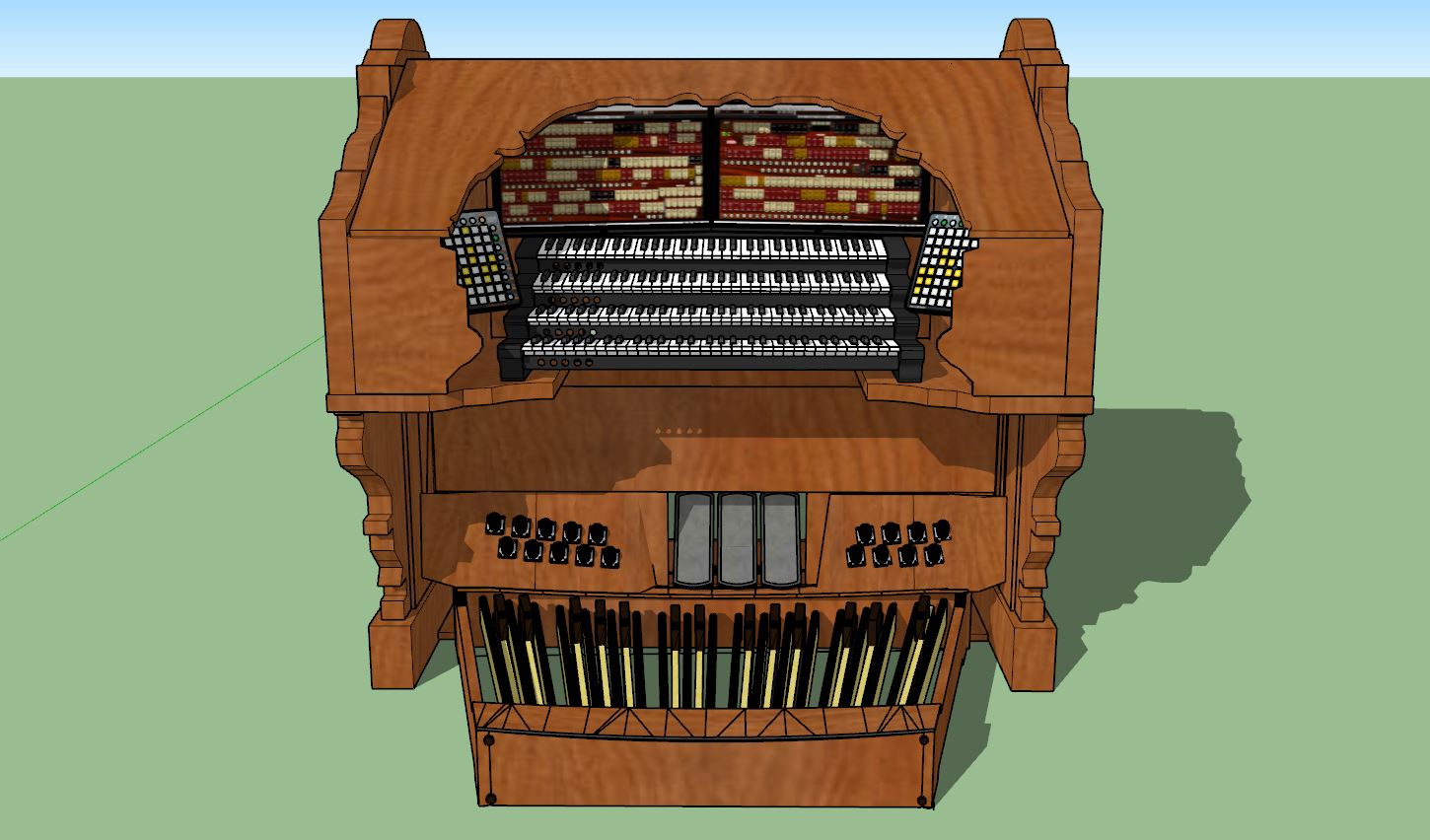I like woodworking, technology and music...so what better to do than to build a musical instrument in a fancy wooden case that runs on electronics and technology?! And why not make it emulate one of the most wonderful and versatile instruments of all time? For my next major project, I'll be building and installing a virtual organ in our house!
What a Virtual Organ is
A Virtual Pipe Organ, or VPO, and in my case more specifically a Virtual Theater Pipe Organ, or VTPO, is essentially MIDI input being used to control software that takes samples, often from real organs from all over the world, and outputs it through as many speakers as you like in surround sound to emulate a real organ. Software like Hauptwerk can be used for practice at home or even full installs at performance venues.
The Console Shell
What will actually hold all of the keys, pedals, controls, etc?
I was originally going to design my own shell to house the manuals, pedals, switches, and other controls in. However...
The Plans I Found
Somehow I came across this ancient looking site:
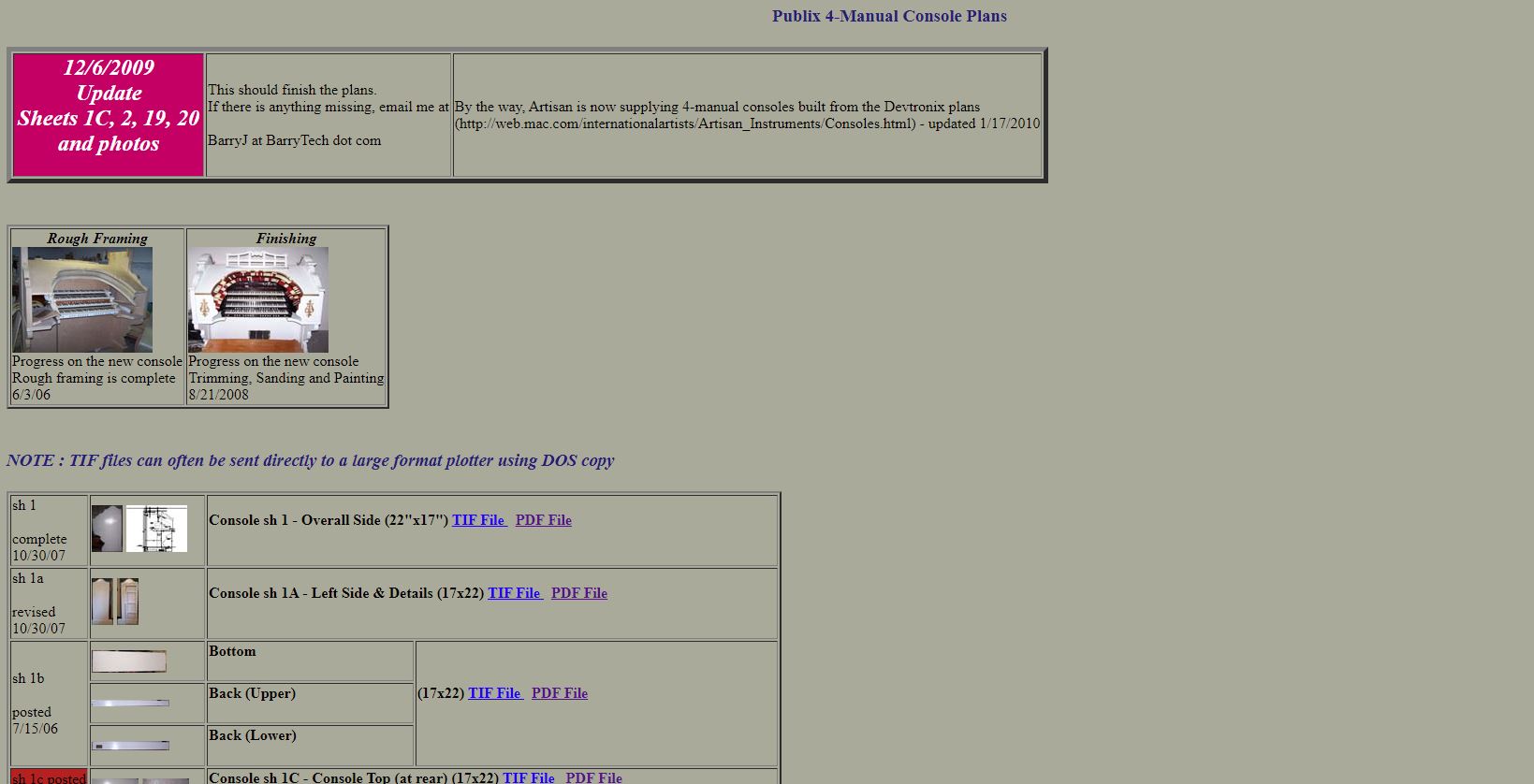
The plans of a replica 4-manual French-style Wurlitzer console! I immediately knew that I was going to build it. Because, why wouldn't I want to build a Wurlitzer? The Publix 4-Manual Organ Console Plans can be found here.
It will stand around 5' 4" tall and roughly 65 inches wide. The console itself will come out about 40 inches, but then the pedalboard and bench sit even further in front. I don't want to even think about how much it will weight. And I probably will not be able to take it to gigs 😢 (although the concept of a portable gig VPO is now giving me another project idea).
At first, I was thinking of painting it white, gold and black, as this style of Wurlitzer is often painted:
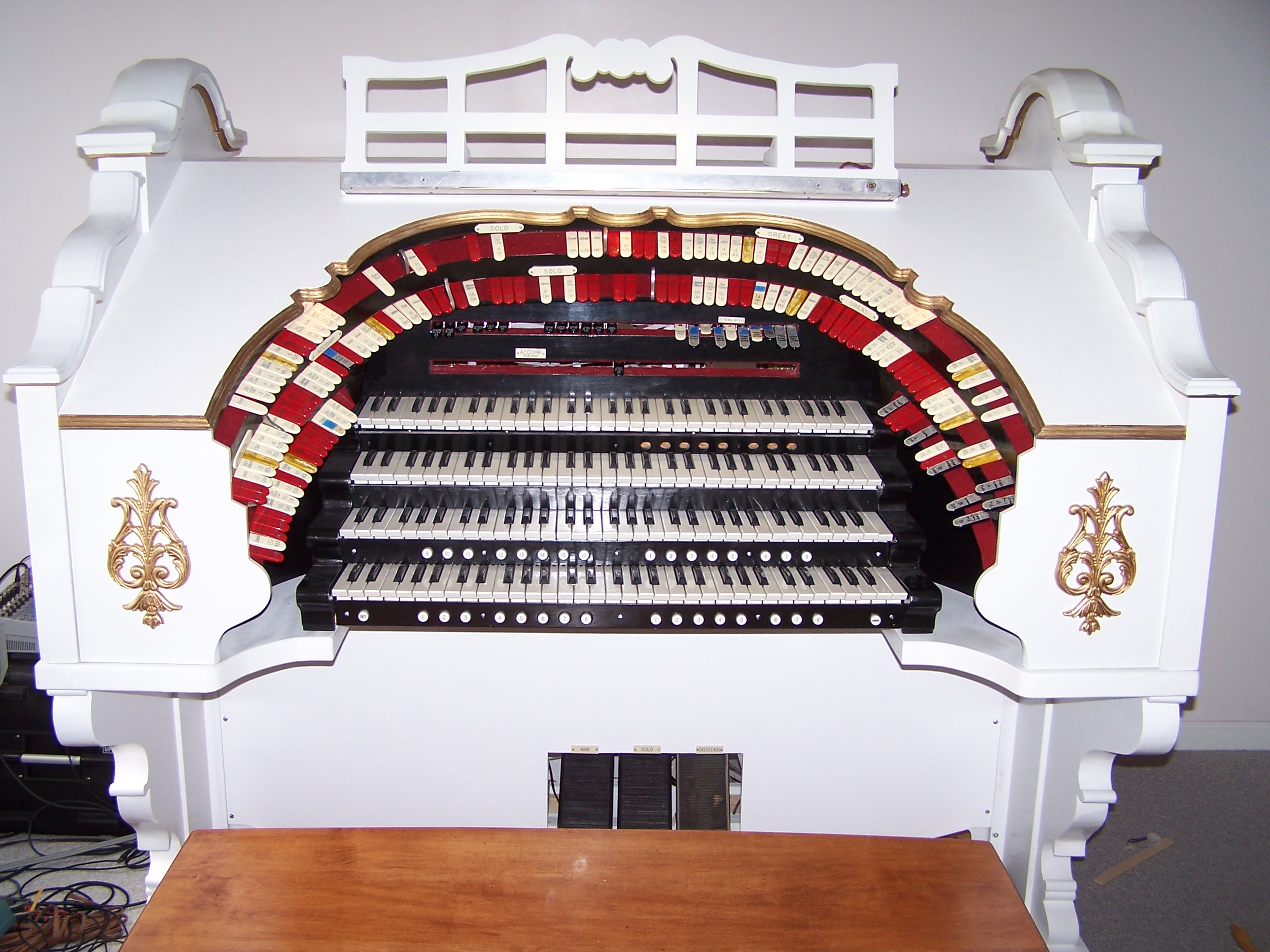
However I probably will find some nice walnut wood to build it out of since I think that will fit our room better. It will also match our baby grand piano, which will be next to it (and playable via the console, too). That would look something like this (keep in mind this model is a rough sketch and not perfect):
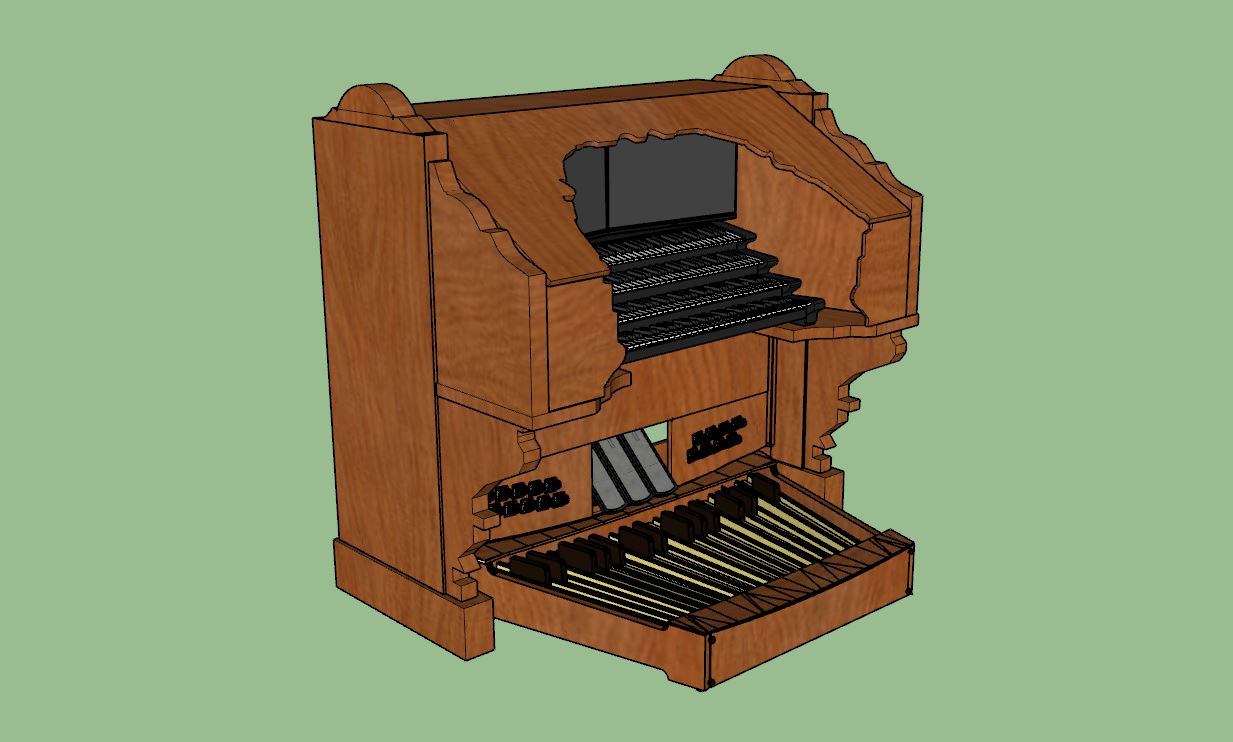
Controls
The keyboards can be easily acquired off of amazon, de-cased and plugged into the computer. However, how will the stops, pistons, swell pedals, toe studs and pedalboard work? Most of these things aren't even made anymore. This is a big issue I had when planning this project, none of this stuff is made anymore! Arggg! Time to search eBay.
Stops
A theater organ console has these things called stop tabs. These are the tabs you push down in order to turn on a set of pipes. Behind each and every one of these tabs is what is called a SAM, or Stop Action Magnet.
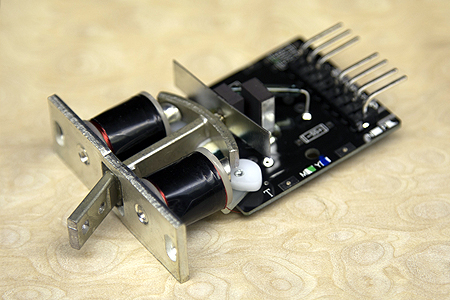
Essentially, a SAM uses two electromagnets (or are they solenoids?) to move the tab up and down autonomously. This is used when, for example, you push a piston (a white button below a manual) that sets all the stops to a preset selection (and they all move up or down accordingly).
The only thing is...these mechanisms are quite the hassle to deal with.
- They are difficult to get a hold of. (Try finding them somewhere! The only company I could find that supposedly sells them is SynDyne, and they haven't responded to my contact inquiry for over a month as of this posting...) You could get them off of an old theater organ, but then you would be destroying a pre-existing console, and even if there was no way to use that original console, it would still cost a ton.
- They would require tons of wires.
- They are super expensive (the price isn't listed on their website, but the last price I saw for some used SAMs was around $19/switch. For my console, it would have at least 150 of these things (probably more), which would mean that I would be spending, at a minimum, around $3,000 or more, just for my stop tab mechanisms! And, that is not even including the actual colored tabs!
- They would require software support (the software running your virtual organ must be able to send the exact right kind of signal to these devices, or you must come up with a way to send the right signal to them, at the right time) otherwise they become useless.
So, I needed a different solution.
The Button Design
I first came up with this design, which utilizes the original stop bolster, just holding push buttons instead of stop tabs:
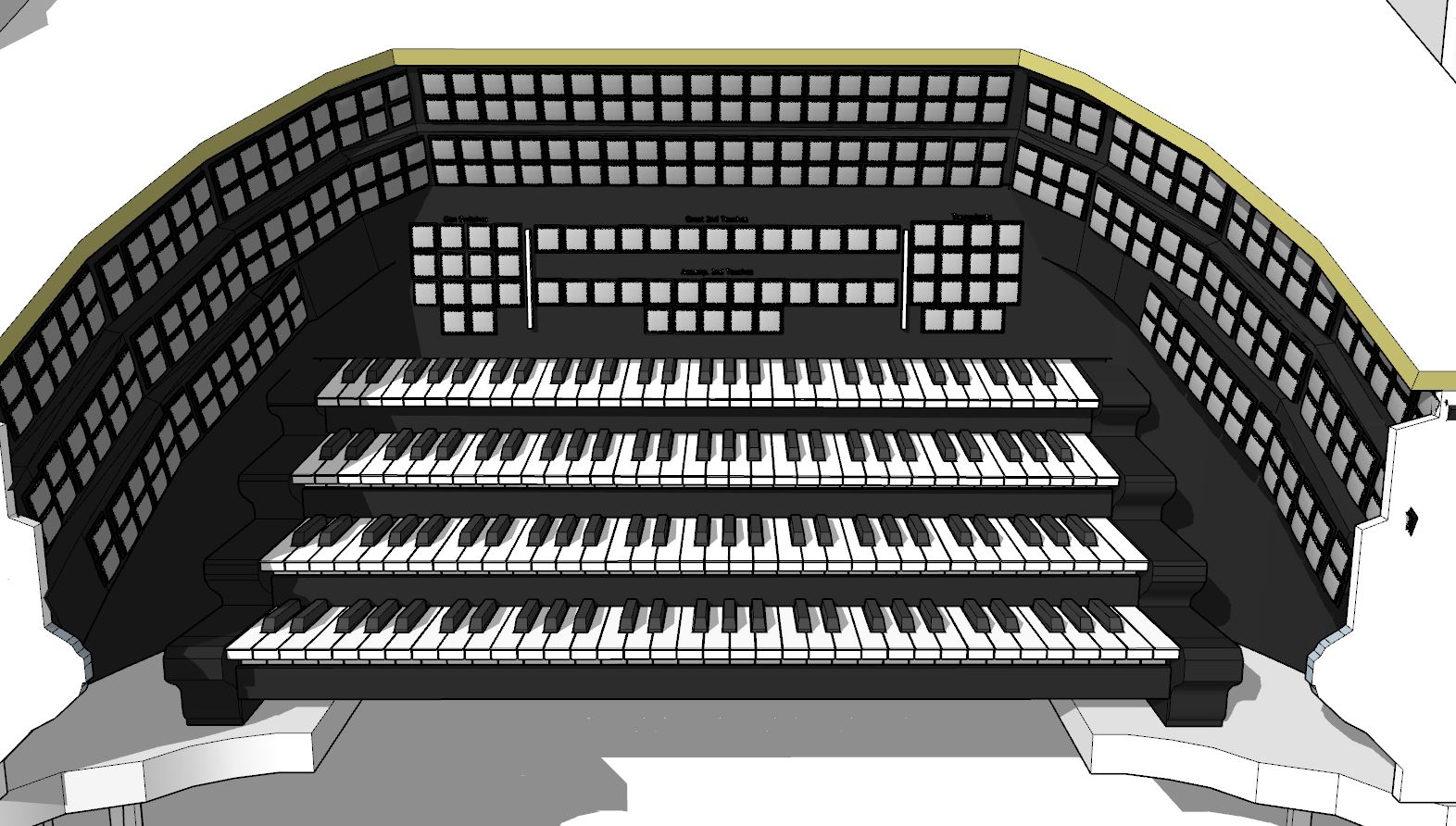
While this looks cool, and fits more with the original analog/physical "fun" of playing the organ, for my particular setup I believe it would be rather impractical. It would not only require loads of wiring, but would also mean that you would have to keep in mind which buttons do what on which organs.
You see, on a VPO, you can switch around to different organs. One song you can play a church organ, one song you are playing a theater organ, and in another you can play a different theater organ! Not every organ is going to have the same layout of stops, and certainly not the same number of stops. If you've only got a third of the stops on your console being used, you have to remember which buttons actually work and which ones don't, which just doesn't make a ton of sense.
The Touchscreen Design
Since the button design is quite cumbersome, hard to work with and impractical, I came up with the idea to just mount touchscreens inside the console. It would be enclosed in the console body, so from the other side around the console it would not look much different from an original Wurlitzer console, but to the player, it will make much more sense.
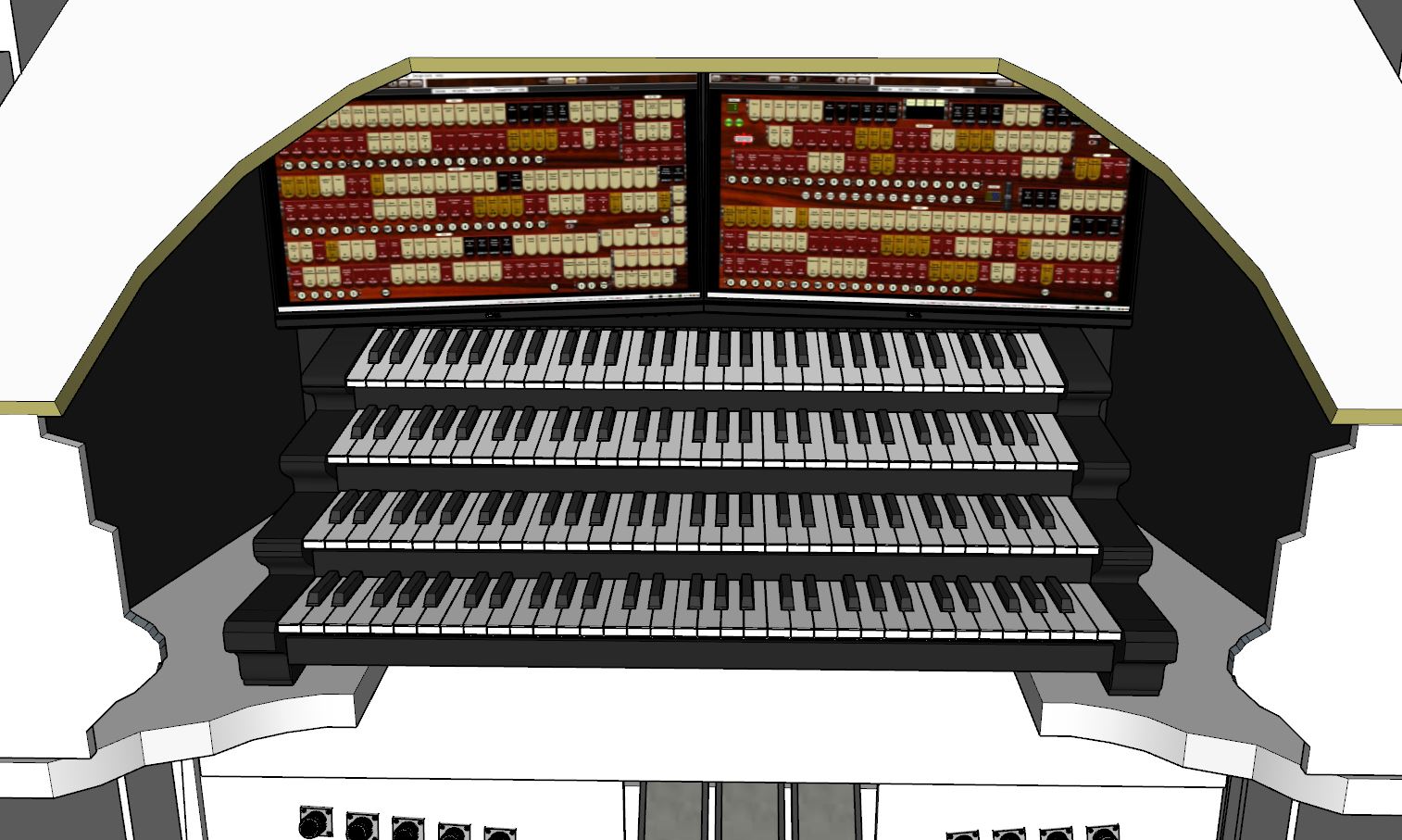
Sure, it might not be as easy to flip multiple tabs in a row quickly like on a console with tabs (although still possible by just dragging your finger on it), but it will flexibly switch between organs and will not require copious amounts of configuring to tell the software what buttons should do what (x150+).
Manual Keys
I'll be getting 4 midi keyboards, unfortunately probably with plastic keys due to the price of wooden keyboards. I'll simply de-case the keyboards and mount the keyboard parts in the key-cheeks of the console shell.
Pistons
I found someone on eBay selling loads of NOS Rodgers Organ piston buttons, so I bought 100 of them. That should be enough for the 20 pistons per manual, plus some replacements in the event one of them breaks. I'll hook them all up into midi encoders, likely a couple Arduinos, to be read by the software.
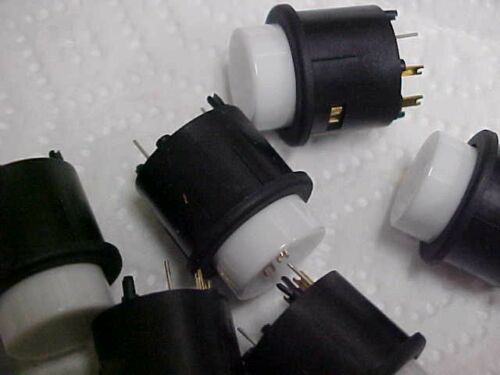
Pedalboard
I was looking to buy a new midi pedalboard, but to get a 32 note, full AGO (built to American Guild of Organists specifications), pedalboard with midi output would be over $2,000. There is no way I am paying that much just for a pedalboard!
So, I found someone on eBay selling the pedalboard from a parted out Hammond RT-3 (it was beyond repair, I wouldn't want to purchase parts from a destroyed working Hammond). It's a full 32-note AGO pedalboard. $300. I will have to drive around 4 1/2 hours to pick it up, but that's nothing to me for the price and the fact that it popped up at all.
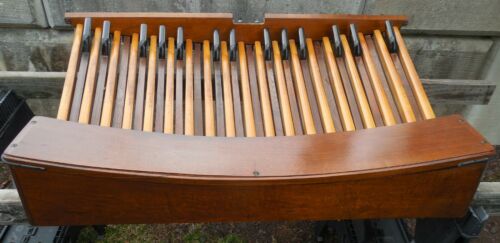
Toe Pistons/Studs
With even more eBay shopping, I found a listing selling an entire 19 toe pistons off of a decommissioned Allen church organ. I've got them in a box ready for installation when the time comes.
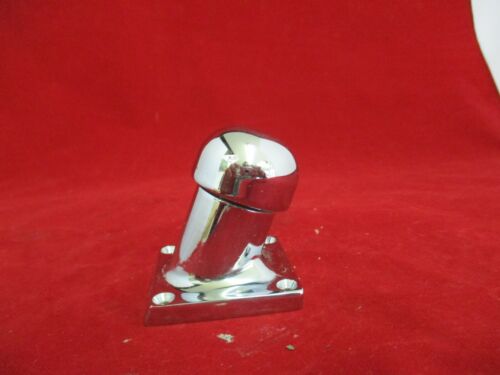
The Sound System
For the sound system, I hope to expand upon it as time goes on, but to start off with I'll have 4 Swissonic monitors with 6.5" subs and 1" tweeters in a simple surround sound setup. That should be good enough for the small circular room it will go in initially.
Update: Jan 2022 - Organ Parts from eBay
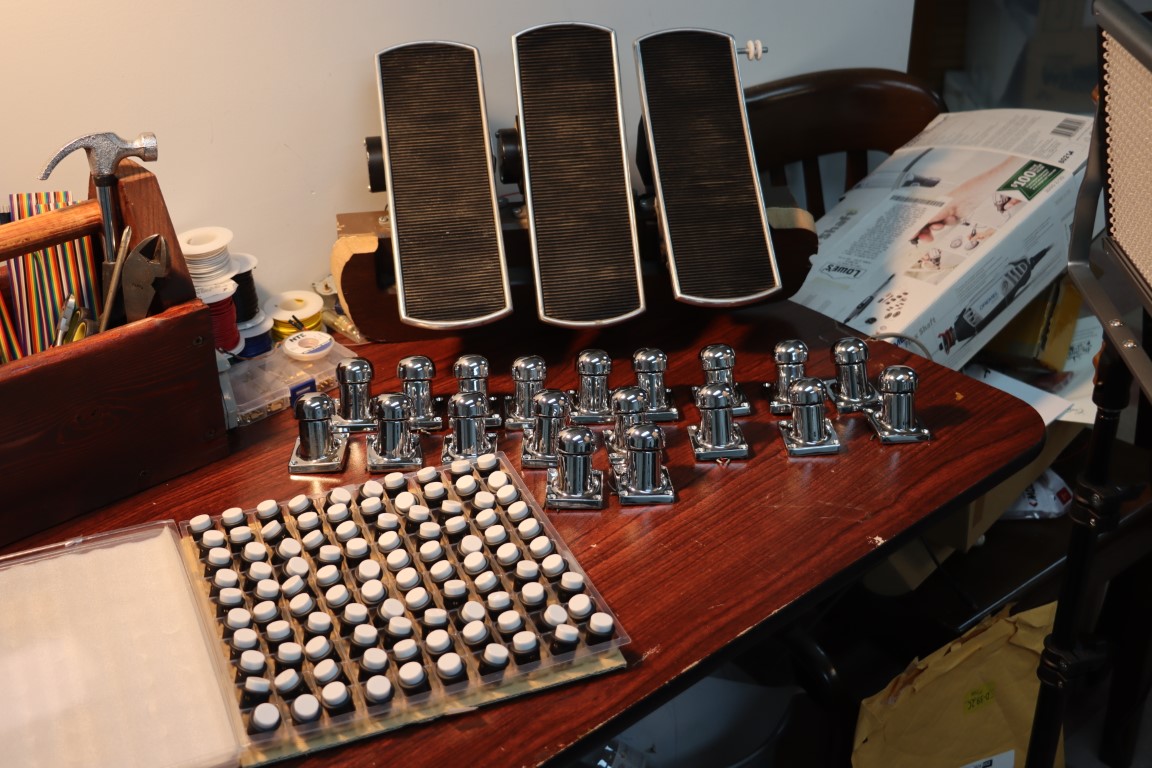
If you've got any comments or suggestions for improvements, feel free to let me know below!
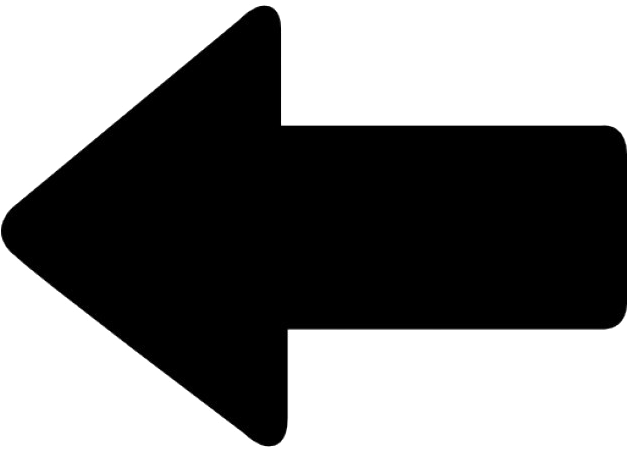 Back to Blog
Back to Blog